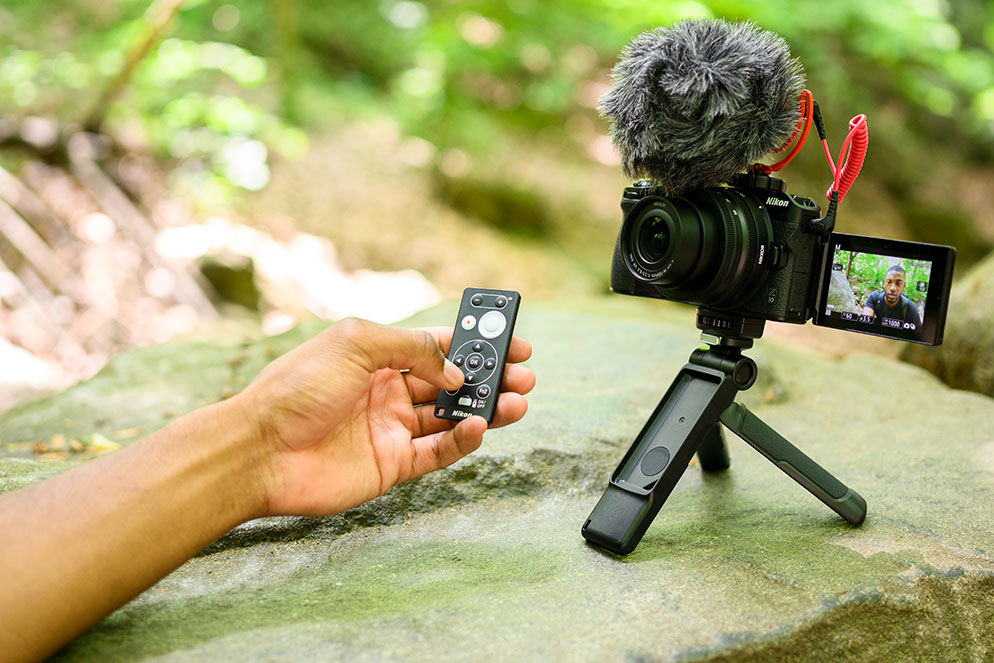How to Shoot Video with a Mirrorless Camera: Pro Tips & Techniques
In today's digital age, professional photographers are constantly seeking ways to elevate their craft and deliver stunning visuals to their clients. One tool that has become increasingly popular in recent years is the mirrorless camera. In this comprehensive guide, we will delve into how to shoot video with a mirrorless camera, offering expert insights, practical tips, and technical know-how to help you make the most of this versatile piece of equipment.

Why Choose a Mirrorless Camera for Videography?
Before diving into the nitty-gritty of shooting video, it's essential to understand the benefits of using a mirrorless camera. Unlike traditional DSLRs, mirrorless cameras offer several advantages that make them ideal for videography:
- Lighter Weight: Mirrorless cameras are generally more compact and lightweight, making them easier to handle during long shoots.
- Electronic Viewfinder: With an electronic viewfinder, you can see a real-time preview of your footage, allowing for better exposure and composition adjustments.
- High-Quality Video: Many mirrorless cameras are capable of shooting high-resolution video, often in 4K, providing exceptional detail and clarity.
- Advanced Autofocus: The autofocus systems in mirrorless cameras are typically faster and more accurate, especially for video, ensuring that your subject stays sharp.

Setting Up Your Mirrorless Camera for Video
To achieve the best results, it's crucial to set up your mirrorless camera properly. Here are some steps to get you started:
1. Choose the Right Lens
The lens you use can significantly impact the quality of your video. Opt for lenses with wide apertures (e.g., f/1.8 or f/2.8) to achieve a shallow depth of field and beautiful bokeh. Prime lenses are often preferred for their sharpness and light-gathering capabilities.
2. Adjust Camera Settings
Set your camera to manual mode to have complete control over the exposure. Key settings to consider include:
- Frame Rate: Choose a frame rate that suits your project. Common options are 24fps for a cinematic look or 30fps for smoother motion.
- Shutter Speed: As a general rule, set your shutter speed to double your frame rate (e.g., 1/48 for 24fps) to achieve natural motion blur.
- Aperture: Adjust the aperture to control the depth of field. A wider aperture (lower f-number) will create a shallower depth of field.
- ISO: Keep the ISO as low as possible to minimize noise. Increase it only when necessary in low-light situations.
3. Stabilize Your Shots
Camera shake can ruin your footage, so stabilization is key. Use a tripod, gimbal, or electronic image stabilization (if available on your camera) to ensure smooth and steady shots.

Advanced Videography Techniques
Once you have the basics down, you can start exploring more advanced techniques to enhance your videos:
1. Manual Focus
While modern autofocus systems are excellent, manual focus gives you precise control over your shots. Use focus peaking (if your camera has it) to assist with achieving sharp focus manually.
2. Lighting
Lighting is crucial in videography. Use natural light whenever possible, but also invest in artificial lighting options like LED panels or softboxes to control the ambiance and highlight your subject effectively.
3. Composition
Composition is just as important in video as it is in photography. Use the rule of thirds, leading lines, and framing to create visually appealing shots. Don't be afraid to experiment with different angles and perspectives.
For more information about mirrorless camera technology, check out what is mirrorless camera technology.

Editing Your Footage
Shooting video is just half the battle editing is where you can truly bring your vision to life. Consider the following tips:
1. Use Professional Software
Invest in good video editing software such as Adobe Premiere Pro, Final Cut Pro, or DaVinci Resolve. These tools offer advanced features for color grading, audio editing, and effects.
2. Color Grading
Color grading can dramatically alter the mood and tone of your video. Learn the basics of color correction and grading to give your footage a polished, professional look.
3. Sound Design
Sound is often overlooked but is equally important as visuals. Use external microphones for better audio quality and pay attention to sound design incorporating background music, sound effects, and clear dialogue.
Common Challenges and How to Overcome Them
Even seasoned professionals face challenges when shooting video with a mirrorless camera. Here are some common issues and solutions:
1. Low Light Performance
Low light can be challenging, as high ISO settings can introduce noise. Use fast lenses, additional lighting, and noise reduction software in post-production to mitigate this issue.
2. Overheating
Some mirrorless cameras can overheat during extended video shoots. Take breaks, use an external recorder, and keep your camera well-ventilated to prevent overheating.
3. Battery Life
Recording video consumes a lot of power. Carry extra batteries and consider using an external power source for longer shoots.
If you're considering buying a used mirrorless camera, check out what to look for when buying a used mirrorless camera.
Conclusion
Mastering how to shoot video with a mirrorless camera requires practice, patience, and a willingness to experiment. With the tips and techniques outlined in this guide, you're well on your way to creating stunning videos that captivate your audience. Whether you're a seasoned pro or just starting, mirrorless cameras offer the flexibility and quality needed to excel in videography.
FAQ
What are the best settings for shooting video with a mirrorless camera?
The best settings can vary depending on your project, but a good starting point is a frame rate of 24fps, shutter speed of 1/48, low ISO, and manual focus.
Can I shoot professional videos with a mirrorless camera?
Absolutely! Mirrorless cameras are highly capable and are used by many professionals to shoot everything from commercials to short films.
How can I improve the audio quality of my videos?
Invest in an external microphone for clearer audio. Also, consider using a windscreen when shooting outdoors to reduce wind noise.
For additional tips, see mirrorless cameras photography tips.
As an Amazon Associate, I earn from qualifying purchases.

